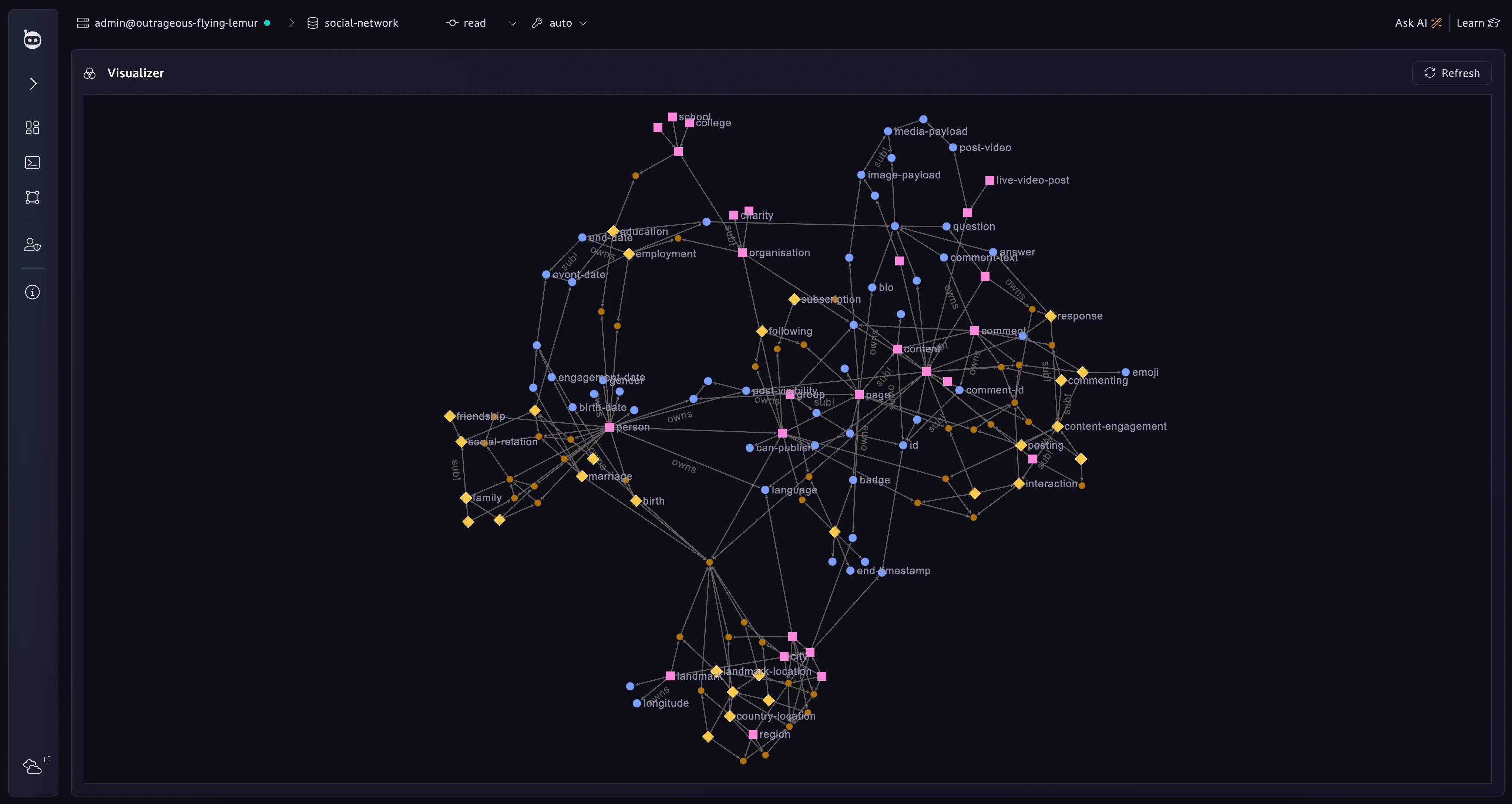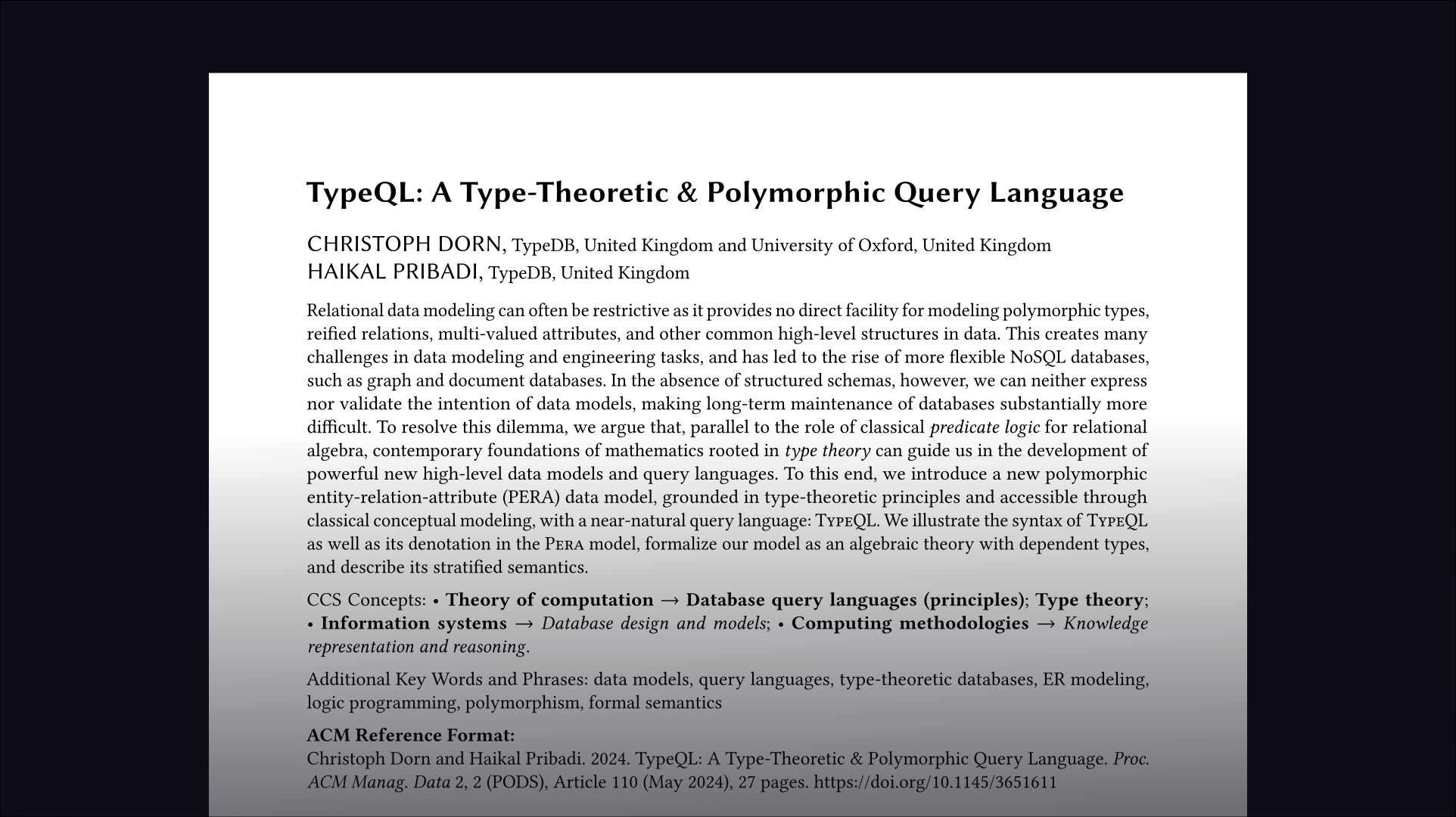Go beyond connections. Turn data into actionable knowledge.
TypeDB is a new kind of knowledge graph that models meaning, not just links. It lets you define entities, relationships, and functions with semantic precision, so your data stays consistent, expressive, and context-rich.
- 1
- 2
- 3
- 4
- 5
- 6
- 7
- 8
- 9
- 10
- 11
- 12
- 13
- 14
- 15
define
attribute name, value string;
attribute object-type, value string;
entity action,
owns name @card(1),
owns object-type @card(1..)
plays segregation-policy:segregated-action @card(0..);
relation segregation-policy,
relates segregated-action @card(2);
Build a new generation of knowledge graph
Traditional knowledge graphs stop at connections. They let you link data, but not define what those links mean or enforce whether they make sense.
Hyper-edges allow you to introduce more nuance to the network, so you can build a true picture of the world you’re trying to model.
Schema with true semantics
Define entities and roles that describe what relationships mean, and which ones are valid.
Ontology-native
Build domain models that combine formal semantics with operational scalability on a foundation that unites reasoning and data integrity.
Correctness guaranteed
TypeDB enforces structure and constraints at the database level, ensuring integrity over time.
Related articles
The challenge: graphs without semantics
Most graph databases are designed for connectivity, not correctness.
- Nodes and edges have arbitrary labels, often duplicated across domains.
- Relationships lack typed roles or formal meaning.
- Queries depend on manual joins, pattern-matching, and fragile assumptions.
As the graph grows, so does inconsistency. Two teams may model the same concept differently, and correlating the data becomes hard. You’re left with semantic drift.
TypeDB fixes that by giving every entity, relationship, and attribute typed semantics and functions that scale with your domain.

Model meaning, not structure
In TypeDB, a relationship is more than an edge. It has roles that define how entities participate and what constraints apply.
Now “ownership” means something precise; who owns what. Queries are written in terms of meaning, not syntax.
- 1
- 2
- 3
- 4
- 5
- 6
- 7
- 8
- 9
- 10
- 11
- 12
- 13
match
$submit isa action, has name "submit order";
$approve isa action, has name "approve order";
insert
$seg isa segregation-policy (segregated-action: $submit, segregated-action: $approve);
match
$kevin isa user, has email "kevin@typedb.com";
insert
$perm isa permission-review (reviewer: $kevin, reviewee: $kevin);
Built for the long term
Knowledge graphs constantly evolve with your understanding. TypeDB’s schema-first model ensures they evolve safely.
- Add new entity or relation types without breaking existing logic.
- Scale horizontally as your knowledge base grows across domains.
- Trace changes over time for auditability with TypeDB Enterprise.
From internal ontologies to global knowledge systems, TypeDB keeps your graph coherent and explainable.


